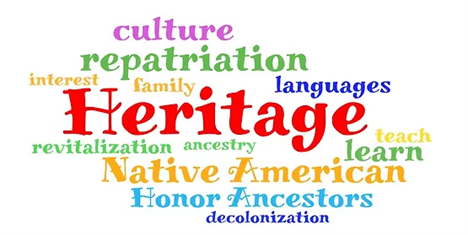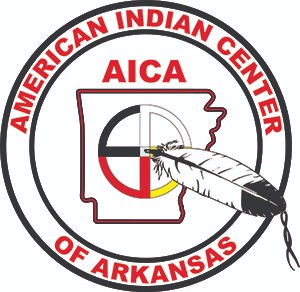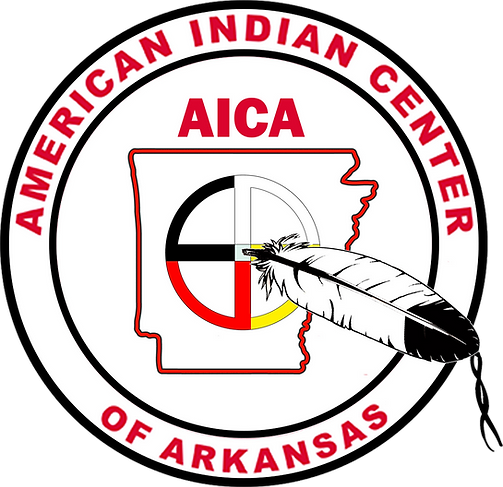
A History of National Native American Heritage Month
For almost one hundred years, Americans, both Indian and non-Indian, have urged that there be a permanently designated place on the calendar to honor the contributions, achievements, sacrifices, and cultural and historical legacy of the original inhabitants of what is now the United States and their descendants: the American Indian and Alaska Native people.
The quest for a national honoring of Native Americans began in the early 20th Century as a private effort. As far back as the late 1970s, Congress has enacted legislation, and subsequent presidents have issued annual proclamations designating a day, a week, or a month to celebrate and commemorate the Nation’s American Indian and Alaska Native heritage. In 2009, Congress passed, and the President signed legislation establishing the Friday following Thanksgiving Day of each year as “Native American Heritage Day.”
Honoring and Citizenship: Early Advocates
After 1900, one of the earliest proponents of a day honoring American Indians was Dr. Arthur Caswell Parker (b. 1881, d. 1955), a Cattaraugus Seneca and the director of the Rochester Museum in New York (now the Rochester Museum of Arts and Sciences). Dr. Parker (Gawasco Waneh) was a noted anthropologist, historian, and author whose great-uncle was Brigadier General Ely S. Parker, secretary to General Ulysses S. Grant during the Civil War and the first American Indian to serve as Commissioner of Indian Affairs in the Department of the Interior. Dr. Parker also served as the first president of the Society for American Archaeology (1935-36).
Dr. Parker founded several American Indian rights organizations, including the Society of American Indians, in 1911, with the founding of the National Congress of American Indians in 1944, advocating for American Indians to be given U.S. citizenship. He successfully persuaded the Boy Scouts of America to set aside a day for the “First Americans,” which they did from 1912 to 1915.
In the spring of 1914, another Indian rights advocate, the Reverend Red Fox James (b. 1890-95, d. ?), also known as Red Fox Skiukusha, whose tribal identity is undetermined, began a 4,000-mile trek on horseback to Washington, D.C., to petition the President for an “Indian Day.” The following year, on horseback, he traveled from state to state seeking gubernatorial support for U.S. citizenship to be extended to American Indians. On December 14, 1915, he presented the endorsements of 24 governors to the White House. In 1919, he petitioned the state of Washington to designate the fourth Saturday in September as an “Indian holiday.”
Also in 1915, the Congress of the American Indian Association, meeting in Lawrence, Kansas, directed its President, the Reverend Sherman Coolidge (1862-1932), an Arapaho minister and one of the founders of the SAI, to call upon the Nation to observe a day for American Indians. On September 18, 1915, he issued a proclamation declaring the second Saturday of each May as “American Indian Day” and appealing for U.S. citizenship for American Indians.
In 1924, Congress enacted the Indian Citizenship Act, extending citizenship to all U.S.-born American Indians not already covered by treaties or other federal agreements that granted such status. The act was later amended to include Alaska Natives.
The Nation’s Efforts to Honor American Indians and Alaska Natives
State Observances
The first time an American Indian Day was formally designated in the U.S. may have been in 1916 when the governor of New York fixed the second Saturday in May for his state’s observance. Several states celebrated the fourth Friday in September as American Indian Day. In 1919, the Illinois state legislature enacted a bill doing so. In Massachusetts, the governor issued a proclamation, following a 1935 law, naming the day that would become American Indian Day in any given year.
In 1968, California Governor Ronald Reagan signed a resolution designating the fourth Friday in September as American Indian Day. In 1998, the California State Assembly enacted legislation creating Native American Day as an official state holiday.
In 1989, the South Dakota state legislature passed a bill proclaiming 1990 as the “Year of Reconciliation” between American Indian and White citizens. According to that act, South Dakota Governor George S. Mickelson designated Columbus Day as the state’s American Indian Day, making it a state-sanctioned holiday.
For more information about state designations for American Indian, Alaska Native, or Native American heritage observations or celebrations, contact the state(s) you are interested in directly.
1992 – The Year of the American Indian
The 500th anniversary of the arrival of Christopher Columbus in the western hemisphere in 1492 was the occasion for national and local celebrations. However, for Native people, it was an occasion they could neither fully embrace nor participate in.
Congress acknowledged their concerns regarding the Columbus Quincentennial by enacting Senate Joint Resolution 217 (Pub. L. 102-188), which designated 1992 as the “Year of the American Indian.” It was signed by President George H.W. Bush on December 4, 1991. According to that act, President Bush issued on March 2, 1992, Proclamation 6407 announcing 1992 as the “Year of the American Indian.”
The American Indian response to the anniversary was marked by public protests. Yet, it also was seen by many in that community as a unique, year-long opportunity to hold public education events, commemorations of ancestral sacrifices and contributions to America, and celebrations for the survival of Native peoples over five centuries.
Federal Observances
In 1976, the United States bicentennial year, Congress passed a resolution authorizing President Ford to proclaim a week in October as “Native American Awareness Week.” On October 8, 1976, he issued his presidential proclamation doing so. Since then, Congress and the President have observed a day, a week, or a month in honor of the American Indian and Alaska Native people. While the proclamations do not set a national theme for the observance, they allow each federal department and agency to develop ways of celebrating and honoring the Nation’s Native American heritage.
- #BisonDay
- #BisonDay2023
- #NationalBisonDay
- #VeteransDay2023
- #RockYourMocs
- #RedShawlWeek
- #GiveThanks
- #NativeAmericanHeritageDay
#https://womenshistory.si.edu/blog/twelve-women-know-native-american-heritage-month?utm_source=si.edu&utm_medium=referral&utm_campaign=OneSmithsonian
#https://nationaltoday.com/american-heritage-month/










One Response
Such great information!!!